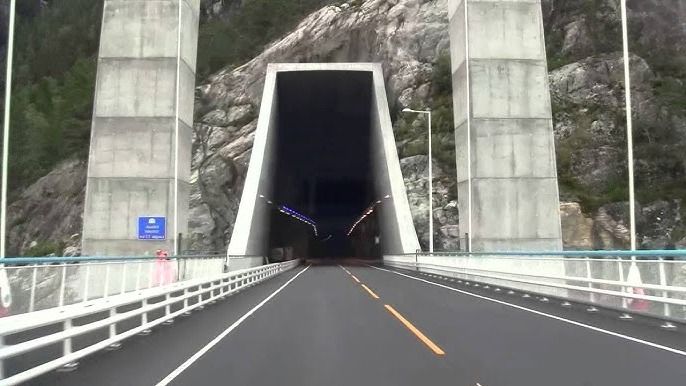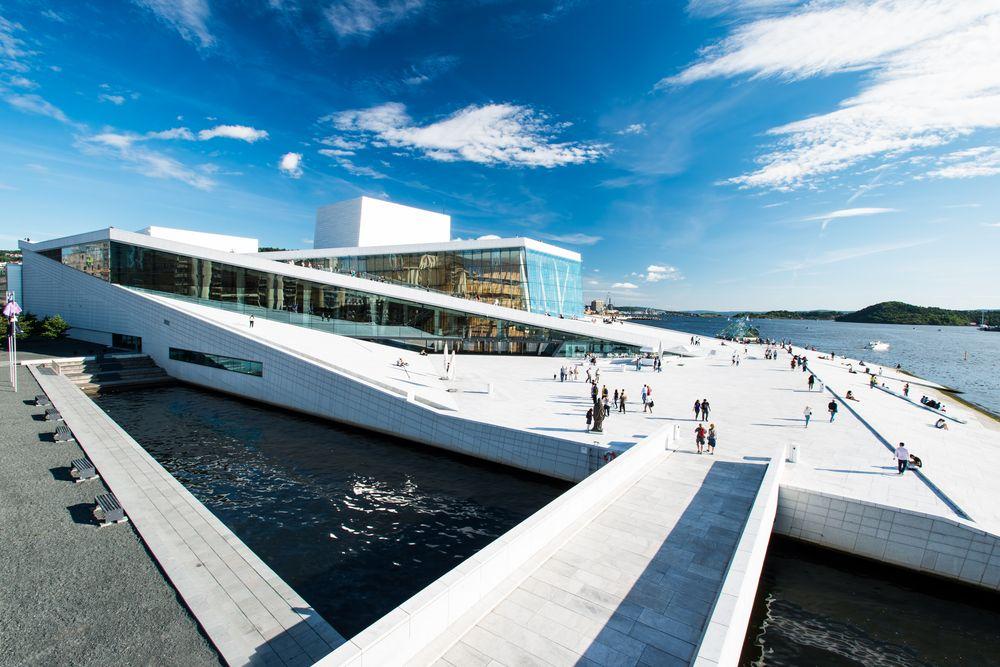The Eiksund Tunnel in Norway is one of many undersea tunnels connecting the towns and cities of this Nordic nation. Norway’s tunnels under the sea are a convenient and necessary form of transport for a nation full of fjords, coastlines and islands.
But, where exactly is the Eiksund tunnel and how deep is this famous undersea tunnel? We’ll answer these questions and more in this article all about Norway’s Eiksund tunnel.
Where is the Eiksund Tunnel?
Also known as the Exon tunnel, the Eiksund tunnel is located in the county of More og Romsdal in the northernmost part of Western Norway. The deep-sea Eiksund tunnel connects two of Norway’s 365 municipalities: Orsta and Ulstein.
Running underneath the Vartdalsfjorden, The Eiksund tunnel was built as part of a larger project to connect the Norwegian mainland and Hareidlandet Island, which involves three tunnels and a bridge. In total, the 40,000 inhabitants of six municipalities are served by this bridge-tunnel complex.
While the Eiksund Bridge connects Hareidlandet Island and the village of Eiksund to the nearby island of Eika, the Eiksund tunnel, which begins at the southern end of the bridge on Eika island, joins with the mainland near the village of Orsta.
How Long is the Eiksund Tunnel?
At a length of 7,765 meters (25,476 ft), the Eiksund tunnel only takes around 10 minutes to drive.
-compressed.jpg)
How Deep is the Eiksund Tunnel?
The undersea Eiksund tunnel reaches a depth of 287 meters (942 ft) below sea level at its deepest point.
Is Eiksund Tunnel the Deepest Tunnel in the World?
Once the deepest underwater tunnel in the world, Eiksund has since been overtaken by Norway’s Ryfast tunnel, which reaches a depth of 292 meters (958 ft) below sea level.
Although it’s no longer the deepest tunnel, the Eiksund tunnel still holds the title of the second-deepest tunnel in the world – pretty impressive!
How Was the Eiksund Tunnel Built?
This Norway underwater tunnel was built using drilling, blasting and explosives. In fact, around 1,300 tonnes of explosives were used to create the Eiksund tunnel, removing over 660,000 cubic meters of rock – that’s about 50,000 truckloads!
All those explosives and trained workers don’t come cheap; the total cost of construction for the Eiksund tunnel was 500,000,000 NOK (Norwegian krone), which is around $46,863,000 USD.
How Many Vehicles Travel Through the Eiksund Tunnel Each Day?
With three lanes, the Eiksund tunnel has a large capacity to carry people through this Norwegian fjord. Around 50% of the traffic traveling through the Eiksund tunnel on a daily basis are trucks.
Estimates for the average daily traffic through Eiksund tunnel were around 1,000 vehicles per day (VPD), but the real average was around 2,200 VPD until the tunnel became toll-free after six years, when the number rose to 2,800 VPD.
What is the Gradient of the Eiksund Tunnel?
The maximum gradient of the Eiksund tunnel is 9.6% between the tunnel’s deepest point and Eika Inlet. As Norway is not part of the EU, tunnel gradients in the country are allowed to reach 10%, whereas EU countries must maintain tunnel gradients of 5% or lower.
With such a steep gradient, some drivers choose to take another route, as is commonly seen with Oslo tunnel, too. Many drivers opt to drive around the fjord or take the ferry to avoid Oslo tunnel’s 7% gradient, so, with an even steeper gradient, it’s no surprise that some drivers choose to avoid the Eiksund tunnel also.
Don’t worry if you plan to take the Eiksund tunnel as part of your Norway road trip though, as many drivers travel the tunnel every day with no problems at all.
-compressed.jpg)
Interesting Facts About the Eiksund Tunnel
Learn more about this Norway underwater tunnel with our interesting facts all about the Eiksund tunnel:
- First opened on 23rd February 2008, the Eiksund tunnel was actually supposed to open to the public during July 2007, but various delays occurred during the construction process.
- The Eiksund tunnel is part of a bridge-tunnel complex called the Eiksund crossing, which is just under 15 kilometers (9.2 miles) long in total.
- A construction and civil engineering government enterprise called Mesta was contracted to build the Eiksund tunnel.
- Special bolts were used in the construction of the Eiksund tunnel, as they need to be hardy against saltwater and able to withstand high pressures. These special bolts are required for all undersea tunnels built in Norway, as they have a lifespan of 50 years in harsh environmental conditions, including the deep sea.
- Over 5 million blast holes were needed to create this deep-sea tunnel!
- Computerized systems were used to create the Eiksund tunnel, including for delivering blasts and grouting.
- The Eiksund tunnel had tolls for six years until the project was paid for completely and then it became toll-free.
- Another deep-sea tunnel is set to overtake both the Eiksund and Ryfast tunnels for the title of the world's longest and deepest underwater tunnel. This is the Rogfast tunnel, which will join the municipalities of Randaberg and Bokn in Rogaland county, Norway. With a projected completion date of 2025-26, the Rogfast tunnel will be 27 km (17 miles) long and have a maximum depth of 392 meters (0.24 miles).
Explore Norway and its Undersea Tunnels for Yourself!
Excited to discover some of the best places to visit in Norway for yourself? Whether you’ll be driving through one of Norway’s underwater tunnels during your vacation or not, you’re surely in for the adventure of a lifetime!
Get prepared for your own unique Norway vacation by reserving your accommodation and campervan rental in Norway ahead of time. Traveling by campervan gives you the ultimate freedom and flexibility to explore all corners of this beautiful country to your heart’s content, while soaking in amazing views along the way. What are you waiting for? Jump in and let’s hit the road (and tunnels!).



 By
By 






